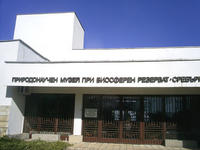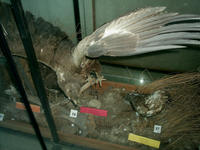You are in: Europe -> Bulgaria -> Srebarna Nature Reserve, and traditional search or Image Gallery will yield results of this site only
Srebarna Nature Reserve
| Site number: | 219 |
|
| Type of site: | Natural | |
| Date of Inscription: | 1983,2008 | |
| Location: | Europe, Bulgaria, Srebarna Village, Silistra Province; 16km west of Silistra town, 1km south-Danube | |
Up to 75 images are shown here. Click on each for more details or on Image Gallery for more images.
| Description: | Extending over 600 ha, the Srebarna Nature Reserve is a freshwater lake bordering the Danube. The site is a breeding ground of almost 100 species of birds (a large portion of which are rare or endangered) and a winter destination of sanctuary for the migration of some 80 other bird species every winter. Amongst the most remarkable bird species who reside in the site are the Dalmatian pelican, great egret, night heron, purple heron, glossy ibis and white spoonbill. --WHMNet paraphrase from the description at WHC Site, where additional information is available. | |
| The Srebarna Nature Reserve (Природен резерват Сребърна, Priroden rezervat Srebarna) is a nature reserve in northeastern Bulgaria (Southern Dobruja), near the village of the same name, 18 km west of Silistra and 2 km south of the Danube. It comprises Lake Srebarna and its surroundings and is located on the Via Pontica, a bird migration route between Europe and Africa. While Lake Srebarna was studied many times in the past by foreign biologists, the first Bulgarian scientist to take an interest in the area was Aleksi Petrov, who visited the reserve in 1911. In 1913, the whole of Southern Dobrudja was incorporated in Romania, but was returned to Bulgaria in 1940, when the area was visited once again by Petrov to examine the colonies of birds that nest there. The area was proclaimed a nature reserve in 1948 and is a Ramsar site since 1975. The reserve was included in the UNESCO World Heritage List in 1983. There are several legends about the origin of the lake's name. The one is about a khan named Srebrist, who died in the neighbourhood whilst engaging in an unequal battle with the Pechenegs. A second one tells about a boat full of silver (srebro in Bulgarian) along the shores of the lake. According to a third one, which is regarded as most plausible, the name comes from the silvery reflections on the lake's surface during full moon. There are hydrophyte species such as reed in and around the lake. The reserve is home to 67 plant species, some of which are in danger of extinction outside the territory of Srebarna. A wide variety of fauna exists in the area. 39 mammal, 21 reptile and amphibian and 10 fish species ihabit the reserve, which is most famous for the 179 bird species that nest on its territory, some of which include the Dalmatian Pelican, the Mute Swan, the Greylag Goose, the Duck, the Marsh Harrier, the Bluethroat, the Titmouse, the Heron and the Cormorant. --Wikipedia. Text is available under the Creative Commons Attribution-ShareAlike License. | ||
| Source: | http://whc.unesco.org/en/list/219 | |
| Reference: | 1. UNESCO World Heritage Center, Site Page. | |









